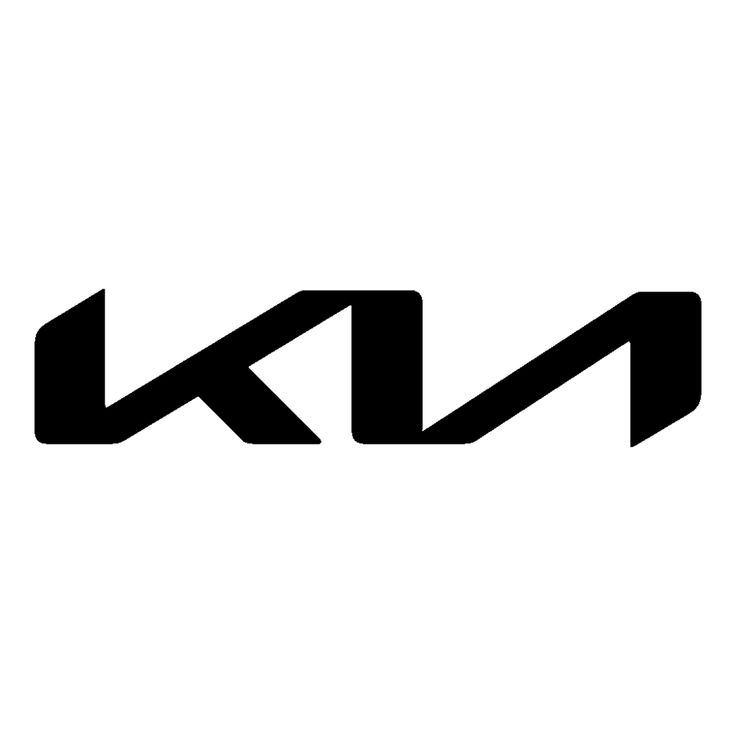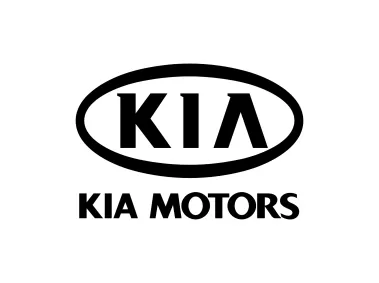Introduction: The Unforeseen Journey from Kia to “KN Car”
In an era where a brand’s digital presence is as pivotal as its physical one, Kia set out on a transformative journey, reimagining its logo to herald its commitment to electric vehicle innovation. This bold move in 2021 was aimed at underscoring Kia’s evolution and its forward-thinking ethos in the competitive automotive landscape. The newly introduced logo was sleek and futuristic, a visual testament to Kia’s ambition and a step away from its traditional image. However, this well-intentioned refresh led to an unexpected digital phenomenon—the surge of the “KN car” search trend.
As soon as the logo made its debut, it became the center of an unforeseen quandary. The logo’s modern design was misinterpreted by many, leading to a wave of online searches for “KN car,” a term born out of the public’s misreading of the stylized “KIA” emblem. This confusion turned “KN car” into a viral search term, accumulating approximately 30,000 searches each month, a testament to the disconnect between Kia’s branding strategy and the public’s perception.
This intriguing turn of events paints a vivid picture of the challenges and complexities surrounding brand redesigns in today’s digital age. While Kia’s intention was to align its brand image with its innovative offerings, the logo’s reception highlighted the fine line between creativity and clarity. The “KN car” phenomenon not only sheds light on the unpredictability of public interpretation but also emphasizes the significant influence of digital platforms on a brand’s identity. Through an in-depth exploration of Kia’s viral logo redesign, this article aims to unravel the nuances of branding in the digital era and the lessons learned from navigating the unpredictable waters of public perception and online engagement.
Unraveling the “KN Car” Phenomenon: Kia’s Logo Redesign and Its Ripple Effects
Transitioning to the Future: Kia’s Bold New Visual Identity
In 2021, Kia Motors took a daring leap into the future with a comprehensive rebranding effort, at the heart of which was the introduction of a new logo. This redesigned emblem was a significant shift from the brand’s traditional logo, moving away from the familiar oval shape and the plainly styled “KIA” text to a more abstract, interconnected design. The intention was clear: to symbolize Kia’s ambitious move towards innovation, particularly in the burgeoning electric vehicle (EV) sector. This transformation was not merely cosmetic but a declaration of Kia’s evolving brand philosophy and market positioning.
The Birth of “KN Car” Confusion
However, this innovative leap forward led to an unforeseen consequence. The new logo, characterized by its futuristic flair, inadvertently sowed confusion among the public. The stylization of the letters was such that many people interpreted the logo as reading “KN” rather than “KIA.” This confusion stemmed from the logo’s design, where the “K” and “I” appeared unusually connected, making the “A” seem detached and leading observers to see a “N” instead. This interpretation challenge was not a minor hiccup but a widespread phenomenon, as demonstrated by search engine trends.
The Scale of Confusion: A Statistical Insight
The extent of the public’s bafflement was quantified by search engine data, revealing that “KN car” queries reached approximately 30,000 searches per month. This staggering number highlights not just individual instances of misunderstanding but a widespread trend that brought to light the critical balance between innovative design and readability. It underscores how digital behaviors and online searches serve as a real-time barometer for public perception, amplifying a branding misstep into a topic of global conversation.
SEO-Focused Insights: The Importance of Clarity in Branding
This case exemplifies the crucial interplay between branding decisions and digital engagement. The “KN car” search trend offers valuable lessons in the digital marketing realm, particularly the importance of ensuring that brand logos are not only visually appealing but also clear and easily recognizable. In an era where online searches can significantly influence brand perception, the Kia logo redesign saga serves as a compelling narrative on the potential pitfalls of branding in the digital age.
Navigating the Digital Wave: Kia’s Logo Redesign Sparks Social Media Frenzy

The Viral “KN Car” Confusion Unleashed on Social Media
The launch of Kia’s new logo set the digital world abuzz, transforming what was intended to be a brand refresh into a widespread phenomenon of public misinterpretation. As the sleek, futuristic design was mistaken for “KN” instead of “KIA,” social media platforms became the battlegrounds for a mix of curiosity, amusement, and bemusement. This section delves into the whirlwind of public reactions across various social networks, highlighting the role of digital communities in shaping and sometimes, reshaping brand identities.
From Curiosity to Memes: The Public’s Digital Response
Social media users, armed with their wit and keyboards, quickly turned the logo confusion into a viral sensation. Memes that played on the “KN car” misunderstanding proliferated, with users creatively interpreting the logo in humorous ways. Anecdotes and personal stories of encountering the logo in the wild added a relatable touch to the discussion, making the topic resonate even beyond automotive enthusiasts. Such content not only entertained but also amplified the confusion, showcasing the collective puzzlement in a light-hearted manner.
Amplification Through Shares and Likes: The Snowball Effect
The dynamic nature of social media meant that each share, comment, and like increased the visibility of the “KN car” topic exponentially. Platforms like Twitter, Instagram, and Facebook served as catalysts, propelling the logo confusion into a topic of global conversation. This digital echo chamber highlighted the power of social networks in spreading information—and misinformation—at an unprecedented pace, underscoring the importance of clear and recognizable branding in the digital age.
Feedback Loop and Brand Perception: Kia’s Social Media Insights
The widespread social media buzz around Kia’s logo redesign offered the brand a direct line of sight into public perception. The instant feedback mechanism of these platforms provided invaluable insights into how the new logo was being received, allowing Kia to gauge the extent of the confusion in real-time. This scenario illustrates the double-edged sword of social media: while it can quickly spread confusion, it also offers brands an opportunity to engage directly with their audience, address misunderstandings, and steer the narrative in a more favorable direction.

Search Engines’ Response to the Confusion
As the confusion around the “KN car” search term grew, search engines like Google demonstrated their adaptability and the sophistication of their algorithms by redirecting queries related to “KN car” towards Kia’s official pages and relevant automotive content. This nuanced response by search engines underscores the dynamic nature of SEO and digital marketing strategies, highlighting several critical implications for brands and marketers alike.
Adapting to User Intent
Search engines are designed to interpret user intent and deliver the most relevant results. In the case of the “KN car” confusion, Google and other search engines quickly identified the connection between the search term and Kia’s intended brand identity, adjusting their algorithms accordingly. This adaptation ensured that users searching for “KN car,” albeit mistaken, were guided to information about Kia cars, thereby bridging the gap between the public’s perception and Kia’s branding efforts.
This responsiveness to user behavior and trends is a testament to the importance of semantic search capabilities, where search engines go beyond the literal match of query terms to understand the context and intent behind searches. For brands, this means the need to optimize content not just for specific keywords but to ensure it aligns with potential customer intents and queries, even when those queries are based on misconceptions.
SEO and Digital Marketing Implications
The “KN car” phenomenon brings to light several key lessons for SEO professionals and digital marketers:
- Keyword Monitoring and Adaptation: It’s crucial for brands to monitor how their names, products, or services are being searched for, including any common misspellings or misconceptions. This insight allows for rapid adaptation of SEO strategies to capture unintentional search traffic and redirect it appropriately.
- Content Optimization for User Intent: Content should be optimized to address a range of user intents, including informational queries that might stem from brand-related confusion. By anticipating and addressing these potential misunderstandings in their content, brands can improve their visibility and relevance in search results.
- Brand Monitoring on Social Media: The initial spread of the “KN car” confusion on social media platforms highlights the importance of social media monitoring in SEO strategies. Social signals and trends can inform content optimization and keyword strategies, enabling brands to respond proactively to emerging search patterns.
- Collaboration with Search Engines: In instances of widespread confusion, brands can benefit from directly engaging with search engines to clarify misconceptions. While not always possible, such collaboration can expedite the correction of misleading search trends and improve the brand’s search presence.
Search Engines’ Response to the Confusion
As the confusion around the “KN car” search term grew, search engines like Google demonstrated their adaptability and the sophistication of their algorithms by redirecting queries related to “KN car” towards Kia’s official pages and relevant automotive content. This nuanced response by search engines underscores the dynamic nature of SEO and digital marketing strategies, highlighting several critical implications for brands and marketers alike.
Adapting to User Intent
Search engines are designed to interpret user intent and deliver the most relevant results. In the case of the “KN car” confusion, Google and other search engines quickly identified the connection between the search term and Kia’s intended brand identity, adjusting their algorithms accordingly. This adaptation ensured that users searching for “KN car,” albeit mistaken, were guided to information about Kia cars, thereby bridging the gap between the public’s perception and Kia’s branding efforts.
This responsiveness to user behavior and trends is a testament to the importance of semantic search capabilities, where search engines go beyond the literal match of query terms to understand the context and intent behind searches. For brands, this means the need to optimize content not just for specific keywords but to ensure it aligns with potential customer intents and queries, even when those queries are based on misconceptions.
SEO and Digital Marketing Implications
The “KN car” phenomenon brings to light several key lessons for SEO professionals and digital marketers:
- Keyword Monitoring and Adaptation: It’s crucial for brands to monitor how their names, products, or services are being searched for, including any common misspellings or misconceptions. This insight allows for rapid adaptation of SEO strategies to capture unintentional search traffic and redirect it appropriately.
- Content Optimization for User Intent: Content should be optimized to address a range of user intents, including informational queries that might stem from brand-related confusion. By anticipating and addressing these potential misunderstandings in their content, brands can improve their visibility and relevance in search results.
- Brand Monitoring on Social Media: The initial spread of the “KN car” confusion on social media platforms highlights the importance of social media monitoring in SEO strategies. Social signals and trends can inform content optimization and keyword strategies, enabling brands to respond proactively to emerging search patterns.
- Collaboration with Search Engines: In instances of widespread confusion, brands can benefit from directly engaging with search engines to clarify misconceptions. While not always possible, such collaboration can expedite the correction of misleading search trends and improve the brand’s search presence.
Kia’s Official Stance and Market Impact
Kia’s Response to the Logo Confusion
In the wake of the widespread confusion over its redesigned logo, which many mistook for “KN” instead of “KIA,” the company acknowledged the public’s reaction. Kia’s official stance was measured and focused on clarifying the intent behind the logo’s design. The company emphasized that the new logo signifies its ambition towards innovation and leadership in the electric vehicle market. Although specific statements from Kia regarding the misunderstanding were sparse, the company’s marketing efforts post-confusion have aimed to reinforce the brand’s identity and clarify the logo’s design and symbolism. Kia used this opportunity to engage more directly with its audience, addressing the confusion through various marketing and communication channels.
Analyzing the Impact on Brand Recognition and Sales
The logo confusion presented a unique challenge and opportunity for Kia’s brand recognition. Initially, the misunderstanding might have caused some concern about potential negative impacts on the brand’s image. However, the inadvertent viral attention actually led to increased visibility for Kia. People who were previously unaware or indifferent to the brand found themselves engaging with Kia’s content, seeking information about the “KN car,” which indirectly boosted brand awareness.
As for vehicle sales, the data and trends following the logo confusion have been largely positive. Kia has continued to report strong sales figures, particularly in segments relevant to their electric and hybrid vehicle offerings. This sustained success suggests that the confusion did not negatively impact consumer purchasing behavior. Instead, Kia’s emphasis on innovation, quality, and design across its vehicle lineup appears to resonate well with consumers, possibly even enhanced by the increased attention from the logo debacle.
The logo confusion’s impact on Kia’s market position is a testament to the strength of the brand and its products. Despite the initial misunderstanding, Kia’s effective communication strategy and continued commitment to innovation have helped maintain and possibly even enhance consumer trust and interest. This scenario underscores the resilience of well-established brands in navigating challenges and turning potential obstacles into opportunities for engagement and growth.
The Broader Implications for Branding and Design
Kia’s experience with its logo redesign offers valuable lessons on the interplay between innovation in branding and the need for clarity in design. This incident illuminates the delicate balance that companies must strike when evolving their brand identity, especially in an era where visual symbols carry significant weight across global digital platforms.
Lessons from Kia’s Logo Redesign
- Clarity is Key: One of the main takeaways from the Kia logo confusion is the importance of clarity in design. While seeking to embody innovation and progressiveness, brands must ensure their logos are easily recognizable and interpretable by a global audience. The misinterpretation of Kia’s logo underscores the risk of overly stylized designs that may not translate as intended to all viewers.
- Public Engagement and Feedback: Kia’s response to the logo confusion highlights the importance of engaging with the public and addressing feedback directly. In the digital age, consumer reactions can unfold rapidly on social media, affecting brand perception. Prompt and clear communication can help mitigate misunderstandings and reinforce brand messages.
- Adaptability in Brand Strategy: The episode also demonstrates the need for adaptability in branding and marketing strategies. Kia’s ability to navigate the confusion, partly by leveraging the inadvertent increase in search and social media buzz, shows the value of being able to turn potential challenges into opportunities for brand reinforcement.
Balancing Innovation with Readability
The challenge of balancing innovative design with readability is not unique to Kia. Other brands have navigated similar waters:
- Apple: Known for its minimalist design ethos, Apple’s branding is instantly recognizable worldwide. The simplicity of the Apple logo, coupled with consistent branding, exemplifies how companies can marry innovation with clarity.
- Google: Google’s logo has undergone several redesigns, each time simplifying its appearance while maintaining the playful use of color and typography that makes it distinctive and approachable. Google’s logo evolution illustrates how brands can evolve while staying true to their identity and remaining clear to consumers.
- Pepsi: Pepsi’s logo redesigns over the years have sought to modernize its brand identity while keeping the logo easily identifiable. The balance between retaining recognizable elements and introducing new design concepts demonstrates the careful consideration required to maintain brand recognition and readability.
Conclusion
Throughout this article, we’ve navigated the intriguing saga of Kia’s logo redesign, which unexpectedly led to the viral “KN car” phenomenon. This journey offered us a panoramic view of the challenges and opportunities inherent in modern brand rebranding efforts, especially in the digital age where public perception can quickly shift and spread on a global scale.
Key Takeaways:
- Kia’s ambitious attempt to redefine its brand identity with a new, futuristic logo design inadvertently sparked widespread confusion, with many mistaking the logo for “KN” instead of “KIA.”
- Social media played a pivotal role in amplifying this confusion, turning it into a viral topic that transcended automotive circles and captured the public’s imagination.
- Search engines, recognizing the trend, adapted quickly, redirecting “KN car” searches to Kia’s official pages, highlighting the adaptive nature of digital platforms in responding to user behavior.
- Despite potential concerns, the confusion did not negatively impact Kia’s brand recognition or vehicle sales in a significant way. Instead, it brought unexpected attention to the brand, showcasing the resilience and adaptability of established brands.
The Kia logo confusion underscores the importance of clear brand messaging in an era where digital platforms can dramatically amplify any misunderstanding. It serves as a reminder that while innovative design is crucial for standing out in a crowded market, readability and immediate recognition are equally important to ensure the brand’s message is accurately communicated and received.
Future Branding Strategies:
- For Kia and other companies, this experience illuminates the need for a balanced approach to branding that weighs innovation against clarity.
- It suggests that in future rebranding efforts, engaging with audiences through market research and social media feedback loops can provide valuable insights that guide more effective brand messaging.
- Moreover, this incident may encourage brands to develop contingency plans for addressing public misinterpretations swiftly and constructively, turning potential challenges into opportunities for engagement and clarification.
We hope you will find this article helpful and invite you to check our blog for more!
